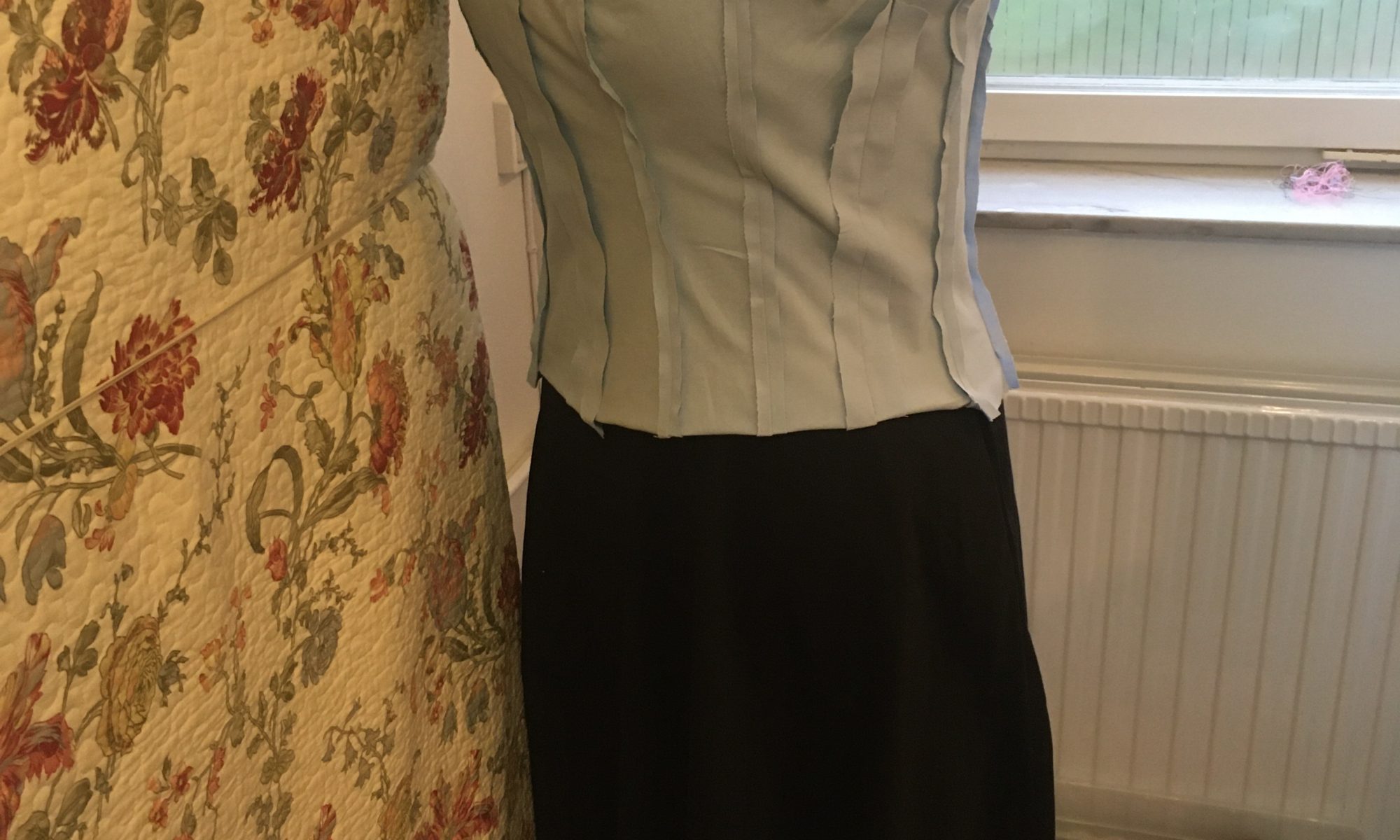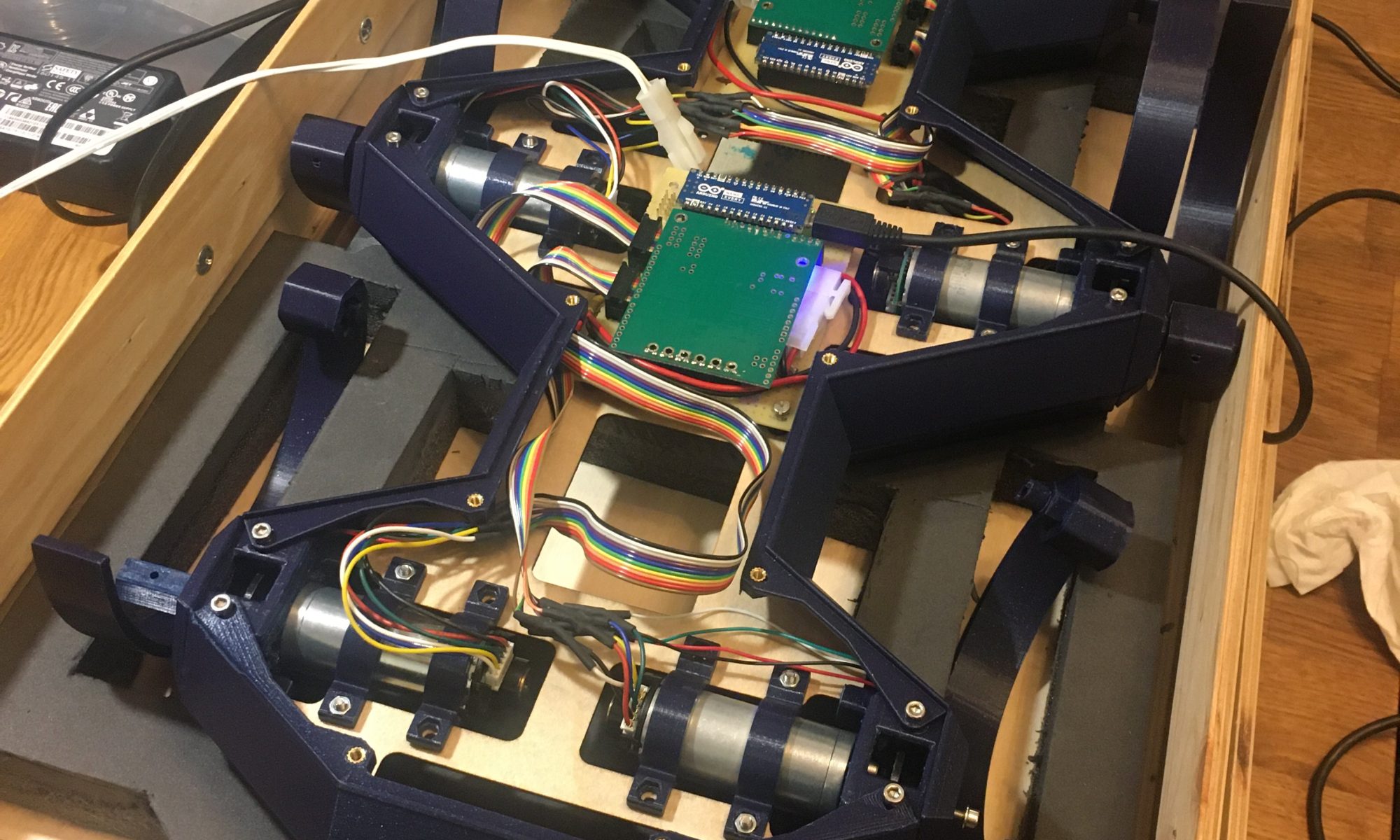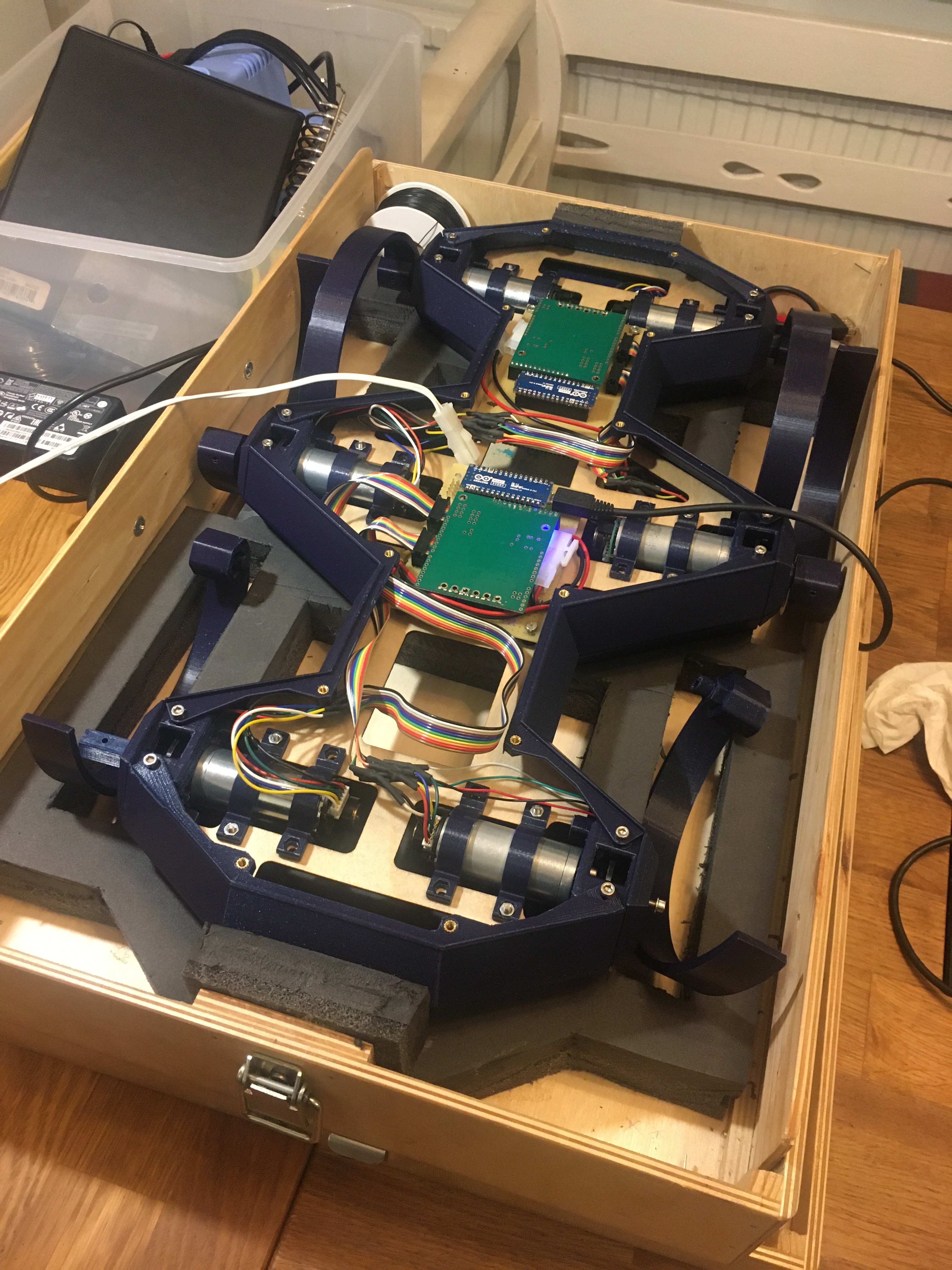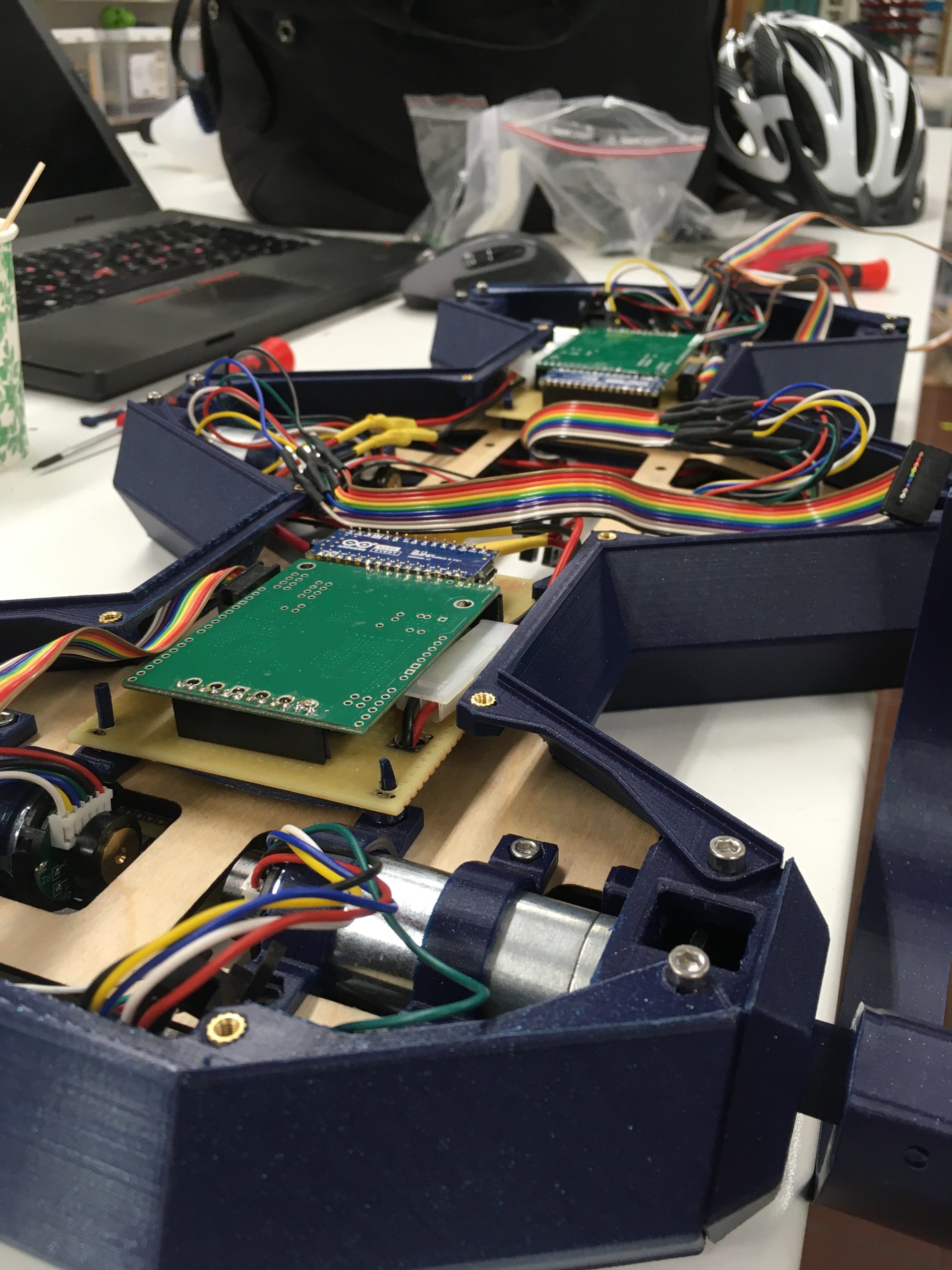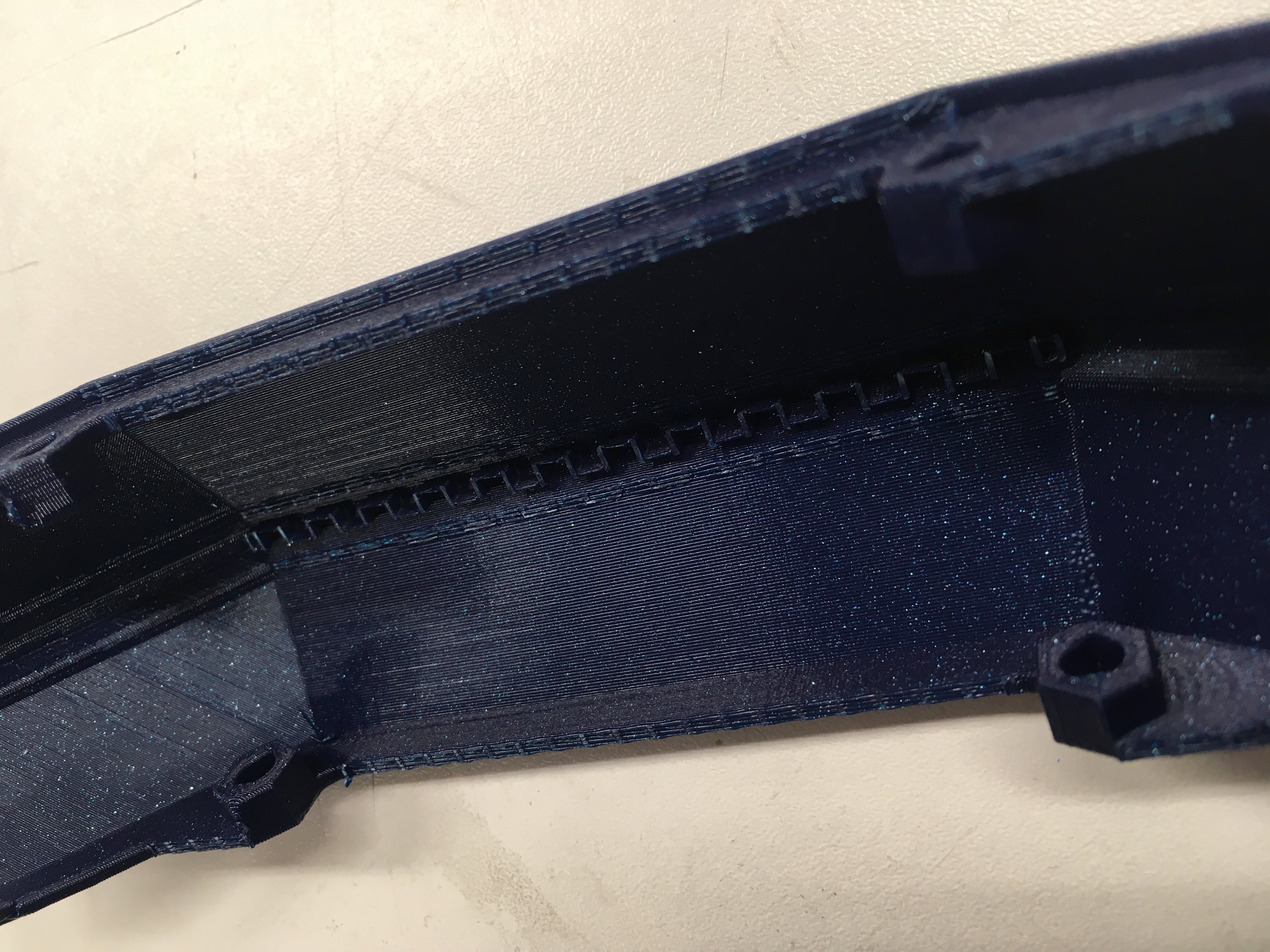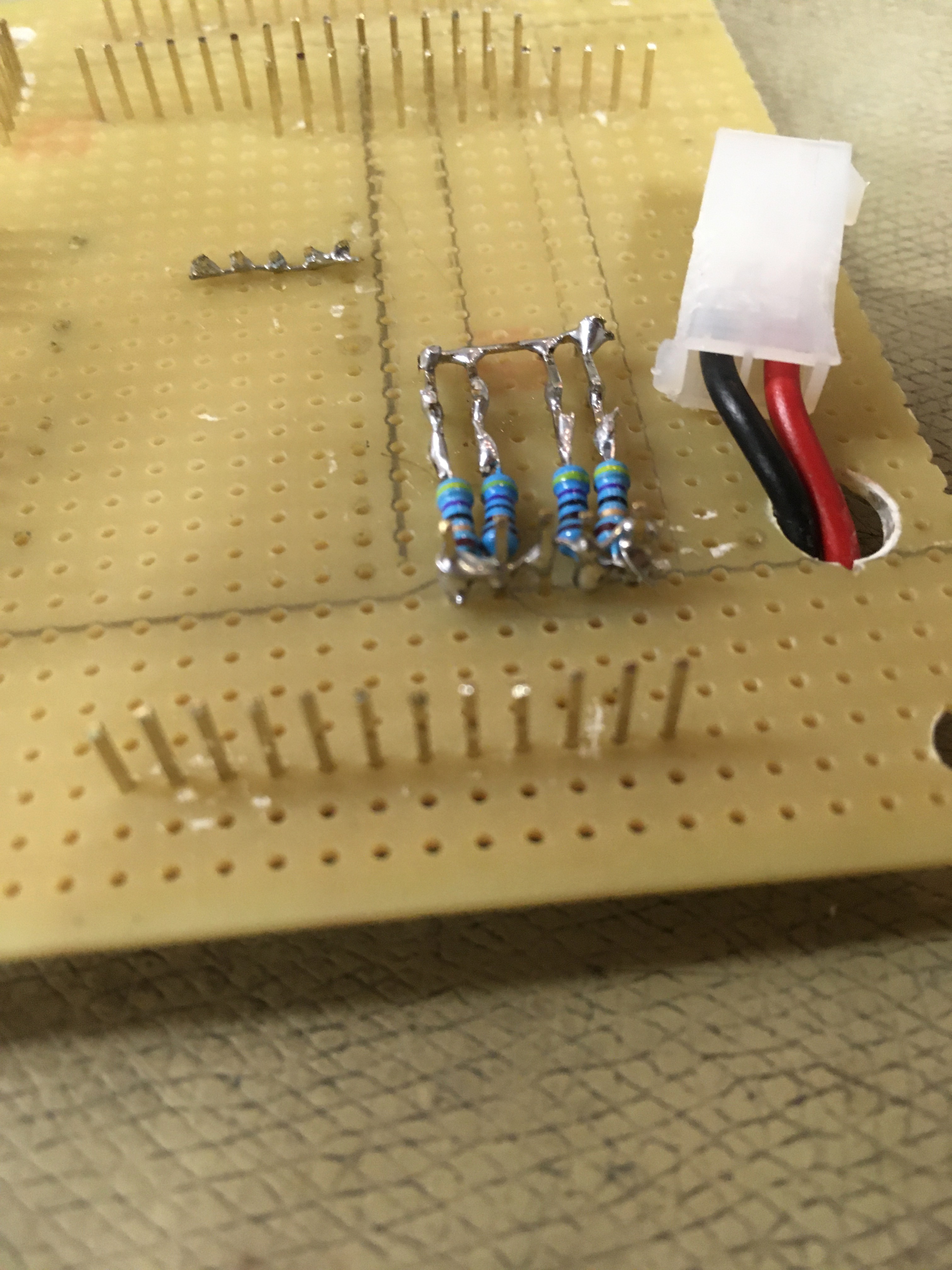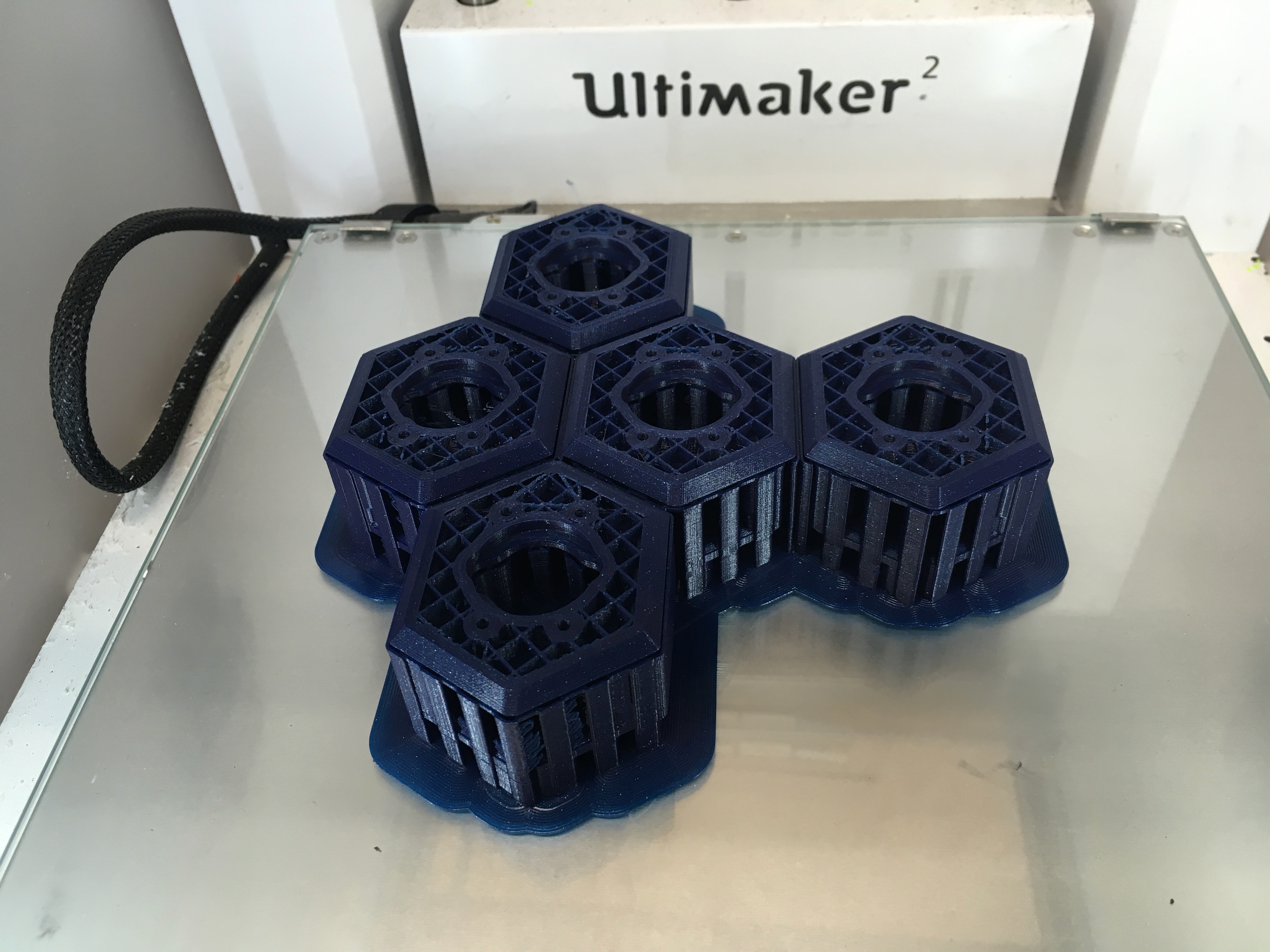So a wedding is coming up. Time to dust off the old sewing skills and take a level in sewing.
A few years ago, I bought the most beautiful blue silk taffeta in Bangalore in order to make a proper evening gown at the next proper occasion. It took a while, but the occasion is now here. 😀
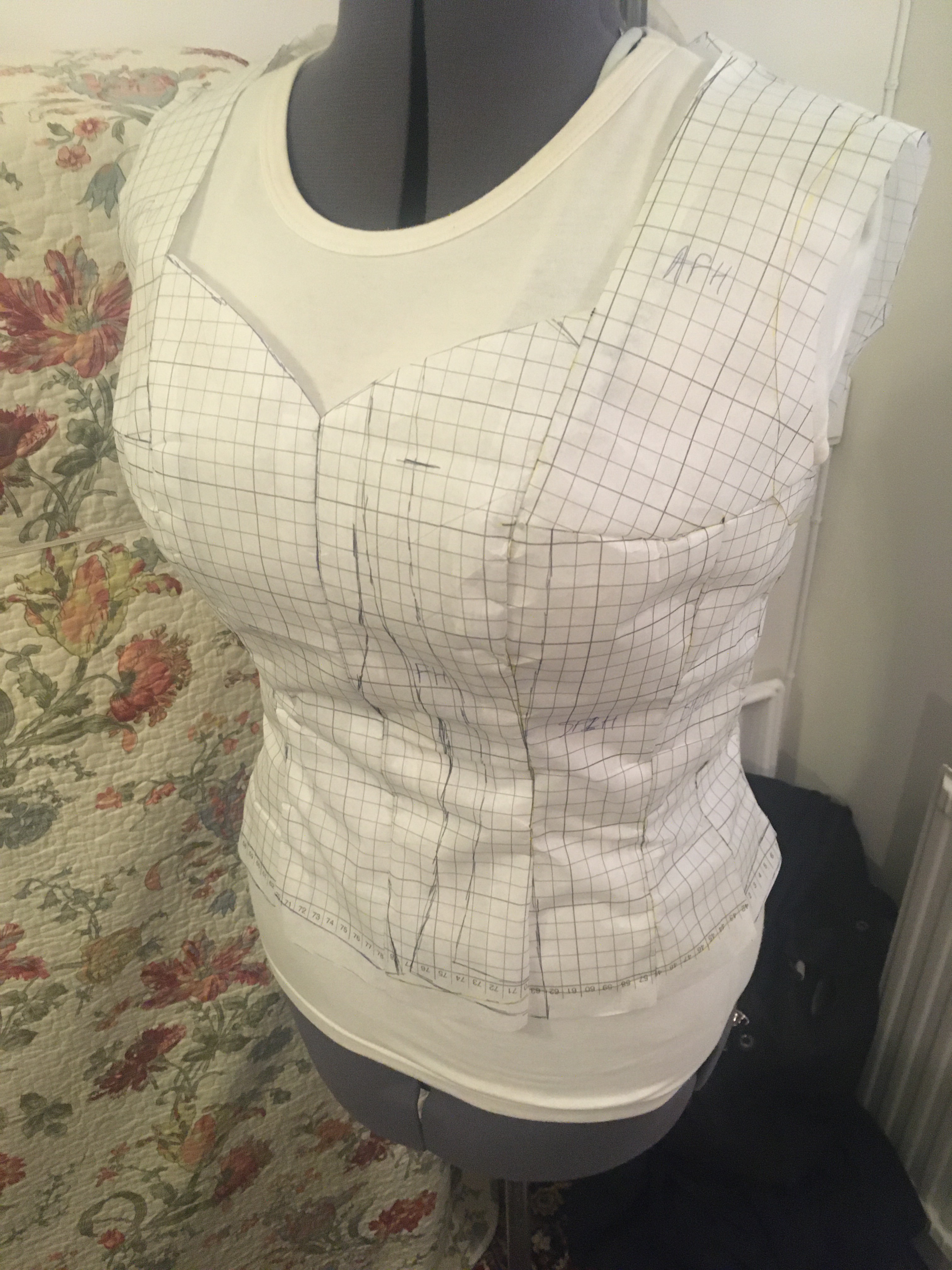
First step was drafting a pattern. After having assisted the manikin to the proper dimensions, I went back to my old trusty method of simply wrapping the manikin in newspaper and painters tape. Then I drew the seam lines on it and cut the paper mold into patterns pieces.
For this project, I had also invested in proper pattern paper with fiber in it so I could see together the final pattern pieces and check that it all fit. It did not so I had to adjust the pattern and then readjust the manikin to fit into the adjuster pattern. This is agile sewing at its best!
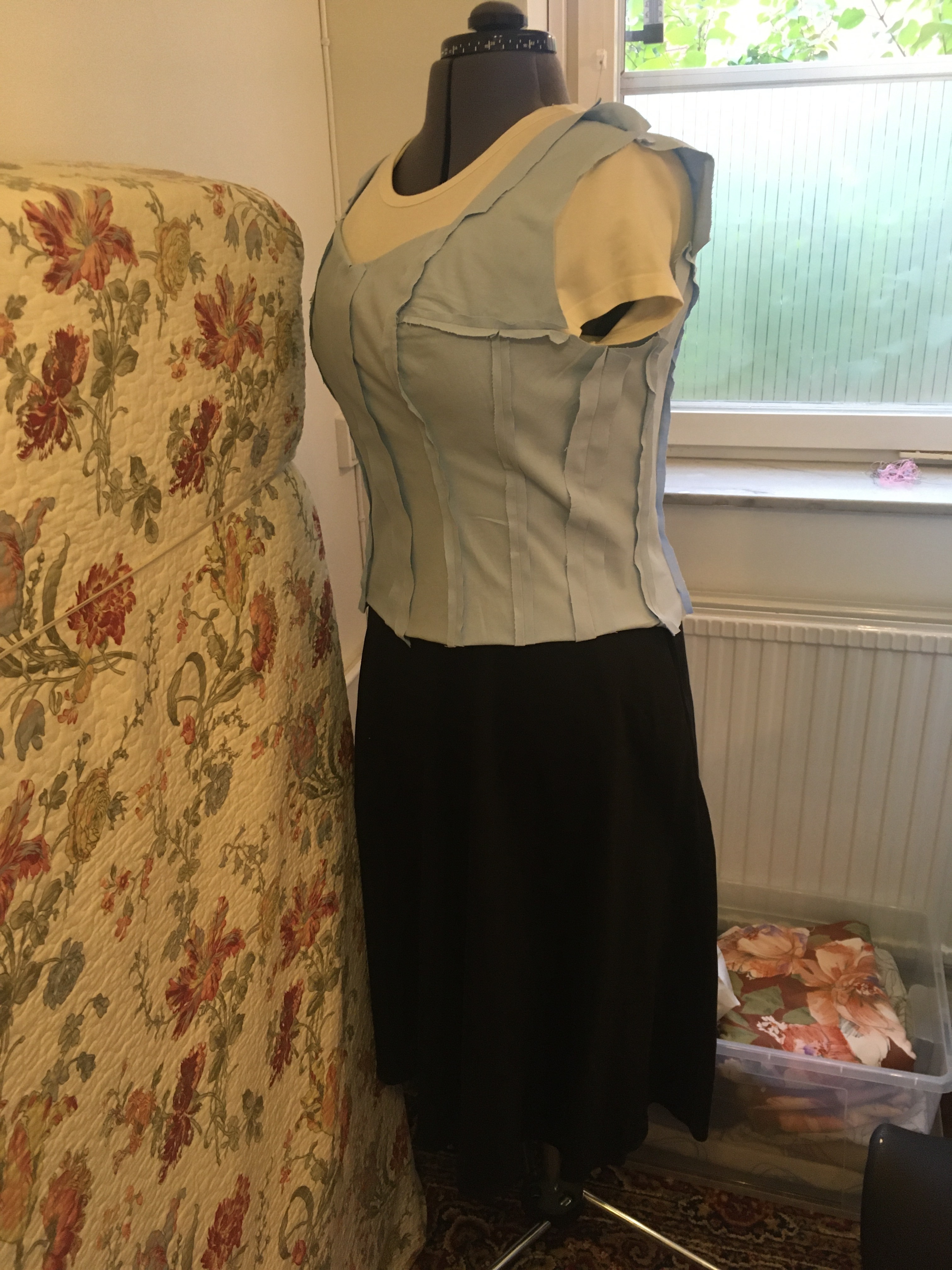
Here we see the inner lining sewn and pressed. I chose to do what I think is the “proper” way. That means cutting the pattern pieces with a wide seam allowance, sewing the pieces together and only then trimming down the allowance to slightly less than one cm and pressing properly.
This method, together with the fact that I chose to make a 7-piece pattern meant that I progressed at maybe a quarter of the speed I am used to. But the result is also way better than what I usually get. So totally worth it!
Oh yeah, the black skirt is an off-the-internet 50s skirt that had the perfect shape and length. So I will simply copy that one for the dress skirt. I will use twice the panels, though to get a chevron look to match the bodice (Yeah, I am getting to that. Patience…)
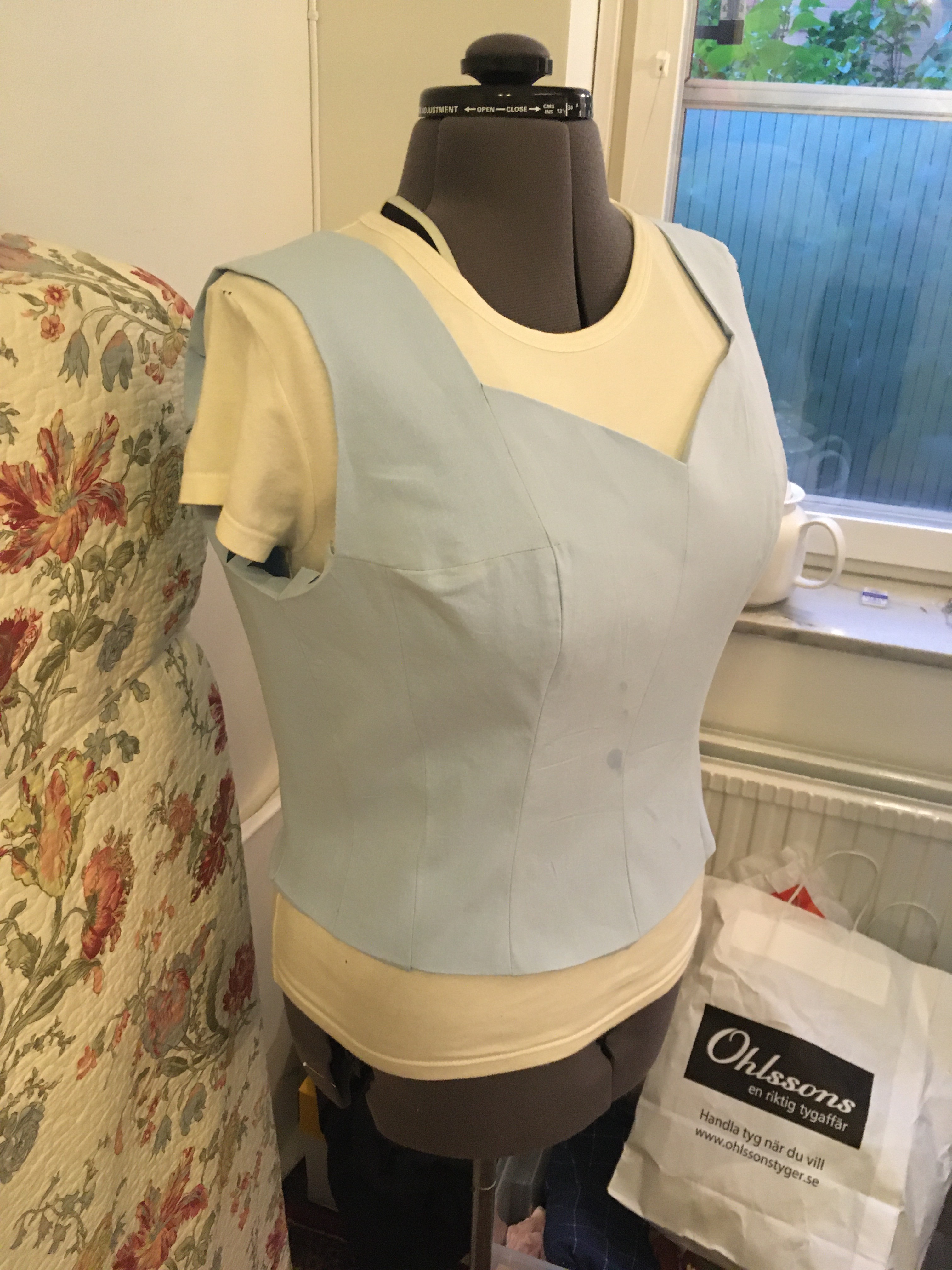
Here is the second of the inner layers. This one has been stiffened with vlieseline. This will be the shaped shell in which I will drape strips of the blue silk. Then the idea is to put the bodice you saw above as lining on the inside for comfort.
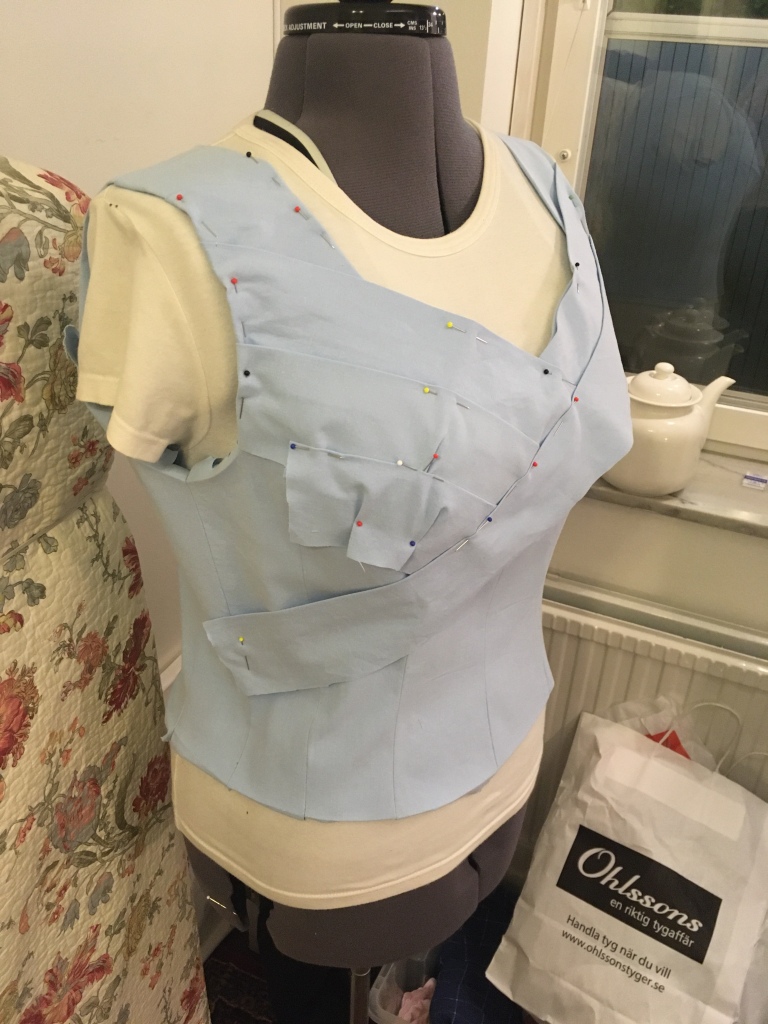
And here we finally see a hint of where I am going with this. The diagonal bands are prototypes and will be made from the blue silk in the final version. These are cut straight on the grain, and as you can see they fold around the cup of the bust. So tomorrow I will try to cut some ribbons on the bias and see if that is enough to get the curve I need.

